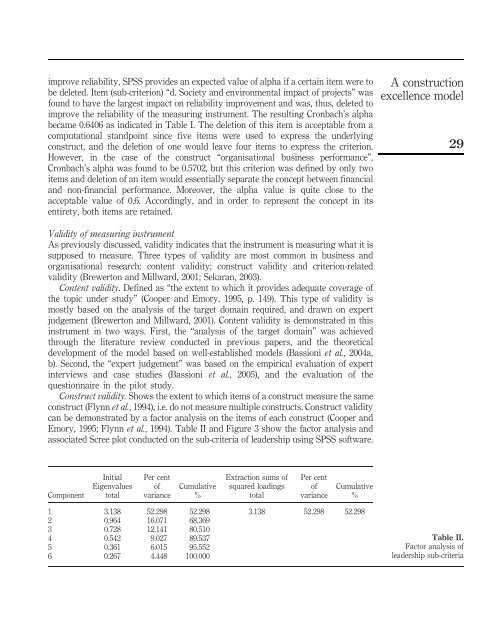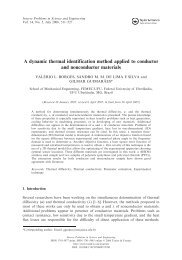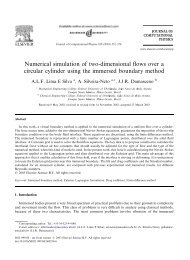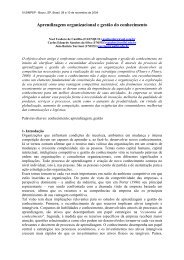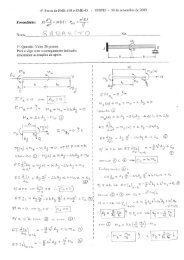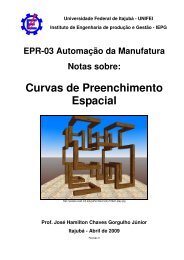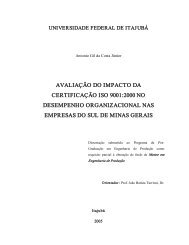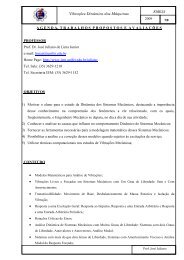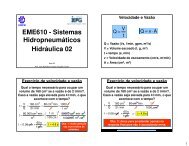Evaluation and analysis of criteria and sub-criteria of a ... - Emerald
Evaluation and analysis of criteria and sub-criteria of a ... - Emerald
Evaluation and analysis of criteria and sub-criteria of a ... - Emerald
You also want an ePaper? Increase the reach of your titles
YUMPU automatically turns print PDFs into web optimized ePapers that Google loves.
improve reliability, SPSS provides an expected value <strong>of</strong> alpha if a certain item were tobe deleted. Item (<strong>sub</strong>-criterion) “d. Society <strong>and</strong> environmental impact <strong>of</strong> projects” wasfound to have the largest impact on reliability improvement <strong>and</strong> was, thus, deleted toimprove the reliability <strong>of</strong> the measuring instrument. The resulting Cronbach’s alphabecame 0.6406 as indicated in Table I. The deletion <strong>of</strong> this item is acceptable from acomputational st<strong>and</strong>point since five items were used to express the underlyingconstruct, <strong>and</strong> the deletion <strong>of</strong> one would leave four items to express the criterion.However, in the case <strong>of</strong> the construct “organisational business performance”,Cronbach’s alpha was found to be 0.5702, but this criterion was defined by only twoitems <strong>and</strong> deletion <strong>of</strong> an item would essentially separate the concept between financial<strong>and</strong> non-financial performance. Moreover, the alpha value is quite close to theacceptable value <strong>of</strong> 0.6. Accordingly, <strong>and</strong> in order to represent the concept in itsentirety, both items are retained.A constructionexcellence model29Validity <strong>of</strong> measuring instrumentAs previously discussed, validity indicates that the instrument is measuring what it issupposed to measure. Three types <strong>of</strong> validity are most common in business <strong>and</strong>organisational research: content validity; construct validity <strong>and</strong> criterion-relatedvalidity (Brewerton <strong>and</strong> Millward, 2001; Sekaran, 2003).Content validity. Defined as “the extent to which it provides adequate coverage <strong>of</strong>the topic under study” (Cooper <strong>and</strong> Emory, 1995, p. 149). This type <strong>of</strong> validity ismostly based on the <strong>analysis</strong> <strong>of</strong> the target domain required, <strong>and</strong> drawn on expertjudgement (Brewerton <strong>and</strong> Millward, 2001). Content validity is demonstrated in thisinstrument in two ways. First, the “<strong>analysis</strong> <strong>of</strong> the target domain” was achievedthrough the literature review conducted in previous papers, <strong>and</strong> the theoreticaldevelopment <strong>of</strong> the model based on well-established models (Bassioni et al., 2004a,b). Second, the “expert judgement” was based on the empirical evaluation <strong>of</strong> expertinterviews <strong>and</strong> case studies (Bassioni et al., 2005), <strong>and</strong> the evaluation <strong>of</strong> thequestionnaire in the pilot study.Construct validity. Shows the extent to which items <strong>of</strong> a construct measure the sameconstruct (Flynn et al., 1994), i.e. do not measure multiple constructs. Construct validitycan be demonstrated by a factor <strong>analysis</strong> on the items <strong>of</strong> each construct (Cooper <strong>and</strong>Emory, 1995; Flynn et al., 1994). Table II <strong>and</strong> Figure 3 show the factor <strong>analysis</strong> <strong>and</strong>associated Scree plot conducted on the <strong>sub</strong>-<strong>criteria</strong> <strong>of</strong> leadership using SPSS s<strong>of</strong>tware.ComponentInitialEigenvaluestotalPer cent<strong>of</strong>varianceCumulative%Extraction sums <strong>of</strong>squared loadingstotalPer cent<strong>of</strong>varianceCumulative%1 3.138 52.298 52.298 3.138 52.298 52.2982 0.964 16.071 68.3693 0.728 12.141 80.5104 0.542 9.027 89.5375 0.361 6.015 95.5526 0.267 4.448 100.000Table II.Factor <strong>analysis</strong> <strong>of</strong>leadership <strong>sub</strong>-<strong>criteria</strong>


